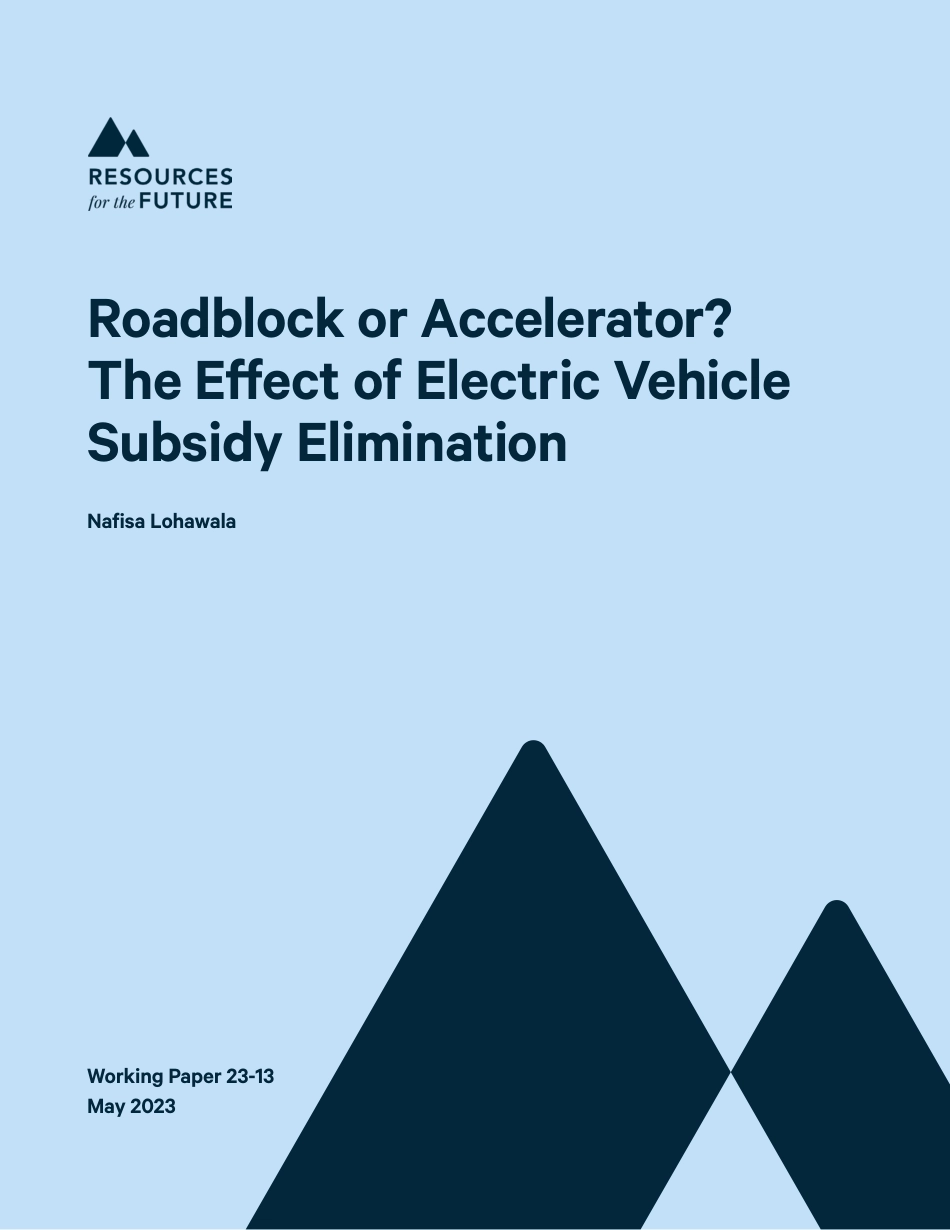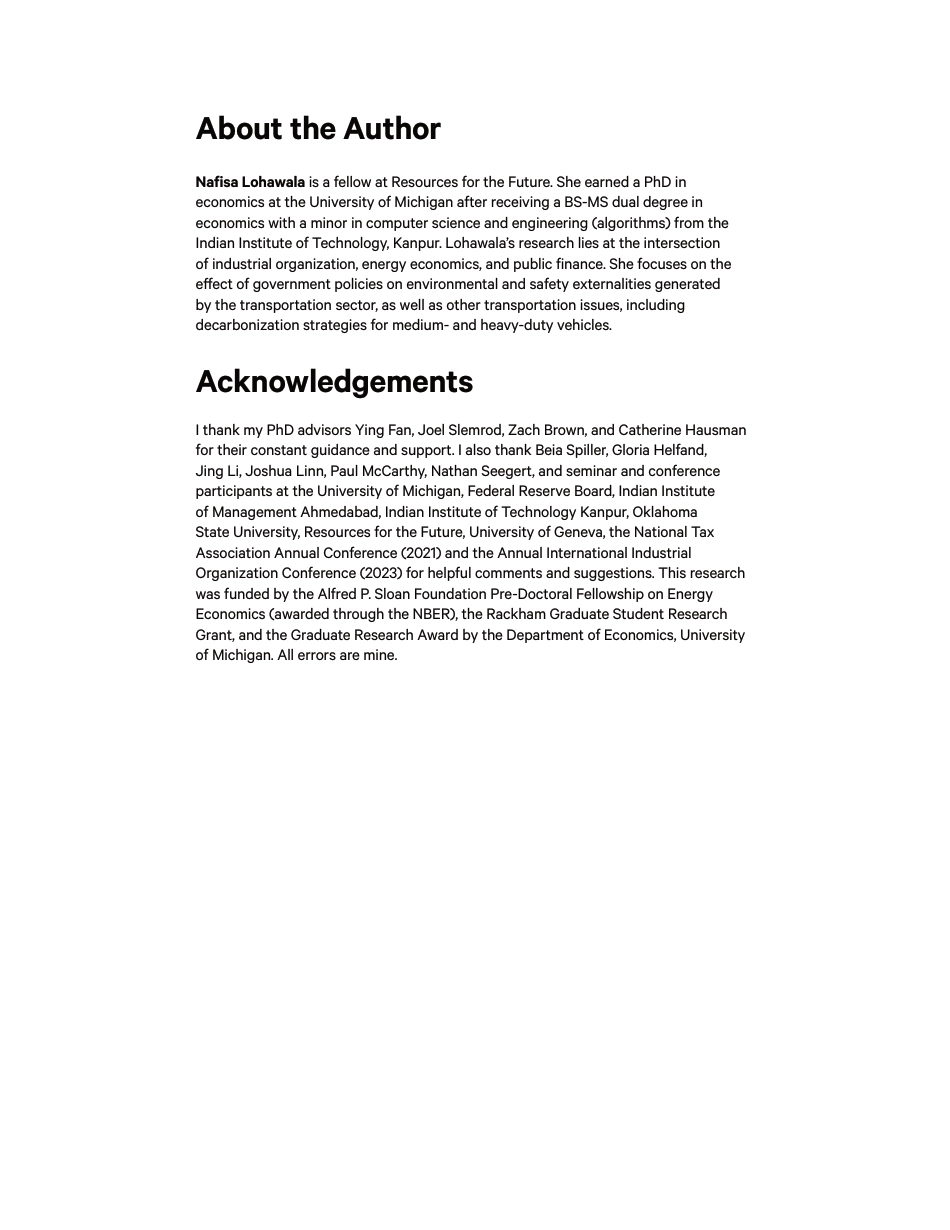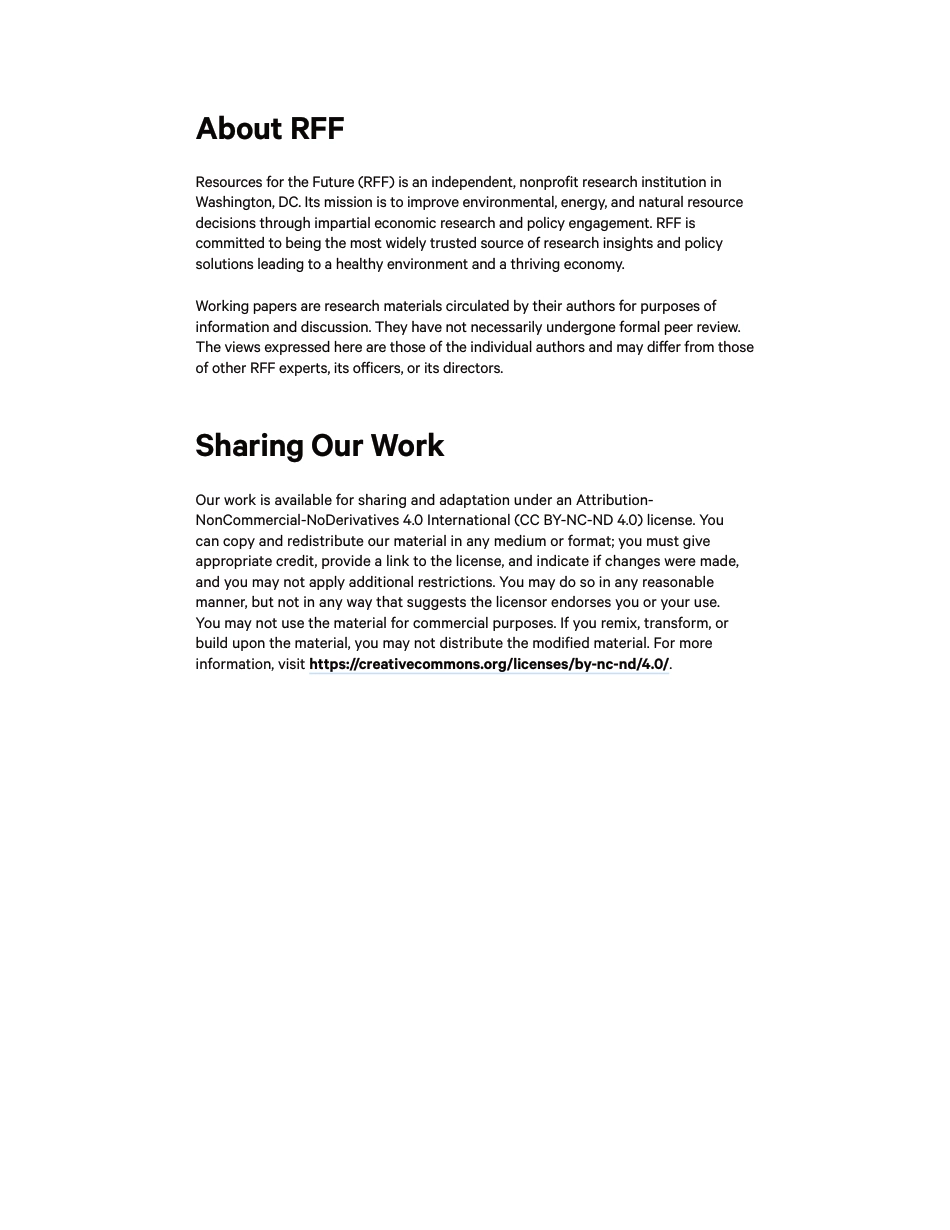Roadblock or Accelerator? The Effect of Electric Vehicle Subsidy EliminationNafisa LohawalaWorking Paper 23-13 May 2023About the Author Nafisa Lohawala is a fellow at Resources for the Future. She earned a PhD in economics at the University of Michigan after receiving a BS-MS dual degree in economics with a minor in computer science and engineering (algorithms) from the Indian Institute of Technology, Kanpur. Lohawala’s research lies at the intersection of industrial organization, energy economics, and public finance. She focuses on the effect of government policies on environmental and safety externalities generated by the transportation sector, as well as other transportation issues, including decarbonization strategies for medium- and heavy-duty vehicles.Acknowledgements I thank my PhD advisors Ying Fan, Joel Slemrod, Zach Brown, and Catherine Hausman for their constant guidance and support. I also thank Beia Spiller, Gloria Helfand, Jing Li, Joshua Linn, Paul McCarthy, Nathan Seegert, and seminar and conference participants at the University of Michigan, Federal Reserve Board, Indian Institute of Management Ahmedabad, Indian Institute of Technology Kanpur, Oklahoma State University, Resources for the Future, University of Geneva, the National Tax Association Annual Conference (2021) and the Annual International Industrial Organization Conference (2023) for helpful comments and suggestions. This research was funded by the Alfred P. Sloan Foundation Pre-Doctoral Fellowship on Energy Economics (awarded through the NBER), the Rackham Graduate Student Research Grant, and the Graduate Research Award by the Department of Economics, University of Michigan. All errors are mine.About RFFResources for the Future (RFF) is an inde...



